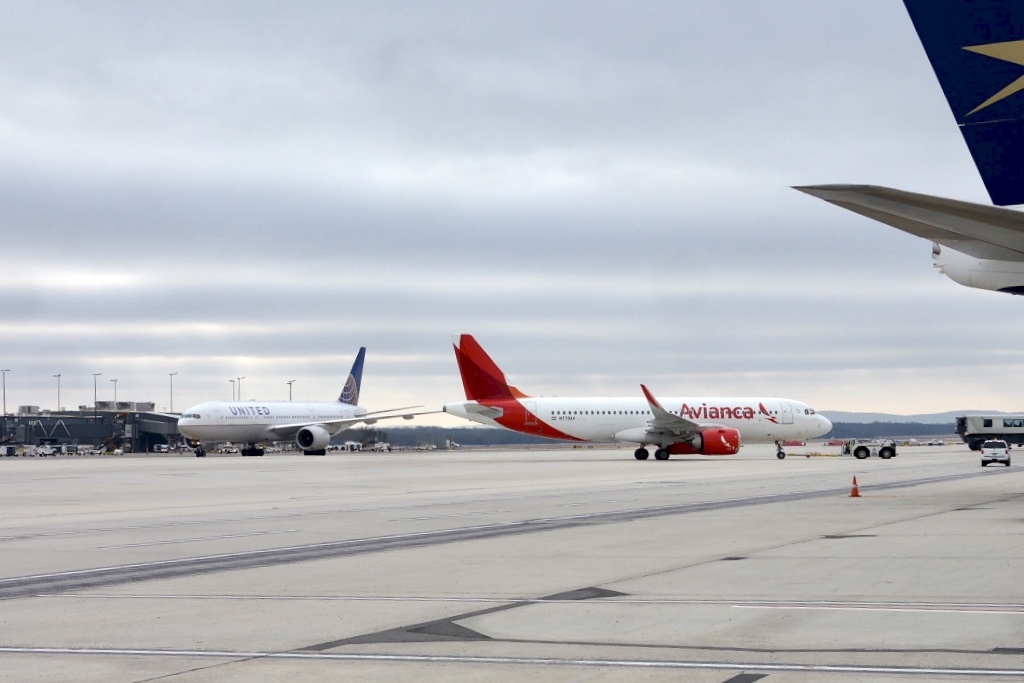Avianca Banks on United Airlines Partnership in Bankruptcy Exit Plan

Photo Credit: Avianca plans to leverage its United Airlines partnership as it exits bankruptcy. Airline Weekly / Edward Russell
Avianca plans to emerge from the Covid-19 crisis as a slimmer but stronger competitor, with partner United Airlines by its side, under a new restructuring plan filed with a U.S. bankruptcy court.
The Bogotá-based carrier's plan, which was submitted to the court on Tuesday, lacks any major additional changes at Avianca. Bogotá and San Salvador remain its primary hubs with secondary operations in Costa Rica and Ecuador; the airline's Peruvian subsidiary was shut in 2020. Its fleet will shrink to as few as 109 aircraft — 98 passenger and 11 freight — when it exits bankruptcy before growing rapidly with 58 new leased jets arriving from 2021-23. And United and the Star Alliance remain key pillars of its international network strategy.
“Avianca expects to build on its core strengths, including its strong operational performance, increased capacity, brand recognition, its market leadership position in the vibrant Latin American airline market … its membership in Star Alliance, and the strength of its LifeMiles program, while becoming a more cost-efficient airline, in order to emerge from [Chapter 11] as an elite competitor for years to come," the airline said in its reorganization plan.
The filing marks the beginning of the end of the three major Latin American carrier Covid-19 reorganizations. Avianca led the way with its Chapter 11 filing in May 2020, Latam Airlines Group followed later that month and Aeromexico in July. All three carriers — the largest in Latin America — were hit hard by the precipitous drop in air travel and the lack of government support to pay their bills. Their bankruptcy filings came as International Air Transport Association (IATA) then-Director General Alexandre de Juniac warned that half of global airlines could "die" — either collapse or merge with competitors — without government aid.
While half of global airlines have not disappeared, many were forced to take dramatic steps to stay alive from laying off tens-of-thousands of staff to slashing fleets. Most did this outside of official restructuring or administration processes though the Latin American carriers were joined by the likes of Norwegian Air and Virgin Australia in these official processes.
A key pillar of Avianca's reorganization plan is its proposed joint venture with United. Prior to the crisis, this was planned as a three-way immunized tie-up between Avianca, Copa Airlines and United covering all flights between South America and the U.S. Brazil's Azul, which United owns a minority stake in, was also considering joining the pact. While Avianca never disavowed the pact during its restructuring, the bankruptcy process opens the door shifting airline allegiances.
As part of its plan, Avianca extended its agreements with United by seven years to 2030, and the U.S. carrier has the option to take an equity stake in the Colombian airline.
Low-cost carriers pose Avianca's greatest competitive threat at home. While it was restructuring, Viva Air Colombia has expanded in their shared home market, and Mexican discounters VivaAerobus and Volaris both unveiled plans to expand to the market. And Volaris plans to open a new El Salvadoran subsidiary by the end of the year. This expansion has "driven significant and lasting downward pressure on fares" and changes in traveler preferences, Avianca said in its plan.
In response, Avianca plans to increase the seating density on its Airbus A320-family jets by roughly 24 percent, according to the plan. That would translate to as many as 186 seats on the airline's A320s based on its 150-seat dual-class configuration prior to the crisis. Both Viva Aerobus and Volaris configure their A320neos with up to 186 seats.
Unlike Aeromexico and Latam, Avianca did not cancel any of its outstanding aircraft commitments with Airbus and Boeing during its restructuring. The airline maintains firm orders for 88 A320neo-family jets due from 2025-29, and two 787-9s due in 2024. Avianca has terminated leases on 12 aircraft and could reject another 47 — including its 11 ATR 72s — by the time it exits Chapter 11. In addition, it could reject another 10 A320neos due in 2023 that it leased from BOC Aviation in early 2020.
Avianca made drastic improvements to its balance sheet through bankruptcy. The carrier cut roughly $3 billion from the $5.2 billion in outstanding debt that it had at the beginning of the crisis. In addition, it has lined up $1.6 billion in bankruptcy exit financing to boost its working capital for the recovery.
But those cuts do not come lightly on unsecured creditors. Many subordinated and inter-company claims would receive nothing on the dollar under Avianca's restructuring plan. Most secured creditors would be fully recompensed, either through cash payments or equity conversions.
The bankruptcy court will hold a hearing on Avianca's restructuring plan on September 14. Comments or objections to the plan are due by September 7.
